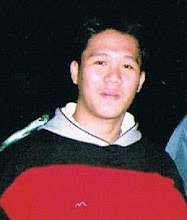IP Address Classes and Their Formats
Since networks vary in size, there are four different address formats or classes to consider when applying to NIC for a network number:- Class A addresses are for large networks with many devices.
- Class B addresses are for medium-sized networks.
- Class C addresses are for small networks (fewer than 256 devices).
- Class D addresses are multicast addresses.
The first few bits of each IP address indicate which of the address class formats it is using. The address structures look like this:
Class A
| 0 | Network (7 bits) | Local address (24 bits) |
Class B
| 10 | Network (14 bits) | Local address (16 bits) |
Class C
| 110 | Network (21 bits) | Local address (8 bits) |
Class D
| 1110 | Multicast address (28 bits) |
The IP address is usually expressed as four decimal numbers, each representing eight bits, separated by periods. This is sometimes known as the dot address and, more technically, as dotted quad notation. For Class A IP addresses, the numbers would represent "network.local.local.local"; for a Class C IP address, they would represent "network.network.network.local". The number version of the IP address can (and usually is) represented by a name or series of names called the domain name.
The Internet's explosive growth makes it likely that, without some new architecture, the number of possible network addresses using the scheme above would soon be used up (at least, for Class C network addresses). However, a new IP version, IPv6, expands the size of the IP address to 128 bits, which will accommodate a large growth in the number of network addresses. For hosts still using IPv4, the use of subnets in the host or local part of the IP address will help reduce new applications for network numbers. In addition, most sites on today's mostly IPv4 Internet have gotten around the Class C network address limitation by using the Classless Inter-Domain Routing (CIDR) scheme for address notation.
 | ||||||||||||||||||||||||||||||||||||||||||
|---|---|---|---|---|---|---|---|---|---|---|---|---|---|---|---|---|---|---|---|---|---|---|---|---|---|---|---|---|---|---|---|---|---|---|---|---|---|---|---|---|---|---|
| ||||||||||||||||||||||||||||||||||||||||||



No comments:
Post a Comment